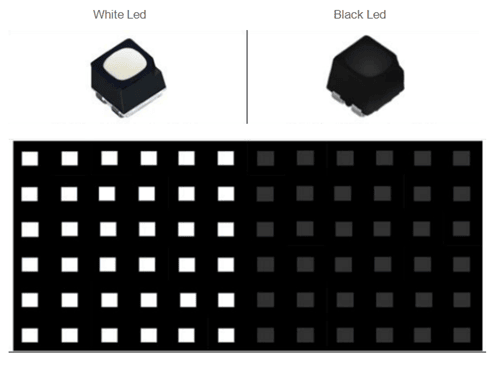Comparing Black LED and White LED
LED displays typically use white LEDs, especially in outdoor settings. However, a recent trend, particularly in small-pitch LED displays and stage backgrounds, is the emergence of black LEDs. Why choose black LEDs, and what advantages do they offer?

The "white" in white LEDs signifies high brightness for long-distance viewing. To understand black LEDs, we need to grasp the concept of white LEDs. Early LEDs used plastic brackets and chips. To enhance focus and reflection for low-brightness chips, engineers designed the plastic brackets as white bowls. However, displaying black and gray shades resulted in color distortion. Despite this, engineers compensated for brightness at the expense of color expressiveness.

While LED displays were historically used for outdoor ads, advancements have eliminated the need for white LEDs. To meet demands for image fidelity and enhance contrast, both foreign (CREE, NICHIA) and domestic (e.g., Lanke Electronics) factories have developed black LEDs, achieving the darkest levels in the market.
The "black" in black LEDs signifies a high-contrast display with richer colors. Grayscale, measuring the difference between the brightest white and the darkest black, is crucial for LED performance. A higher grayscale allows for more vivid colors.

In conclusion, black LEDs, with their high contrast and realistic color representation, mark a shift in the LED display era. As demand grows for superior screens, black LEDs are poised for substantial market growth.





